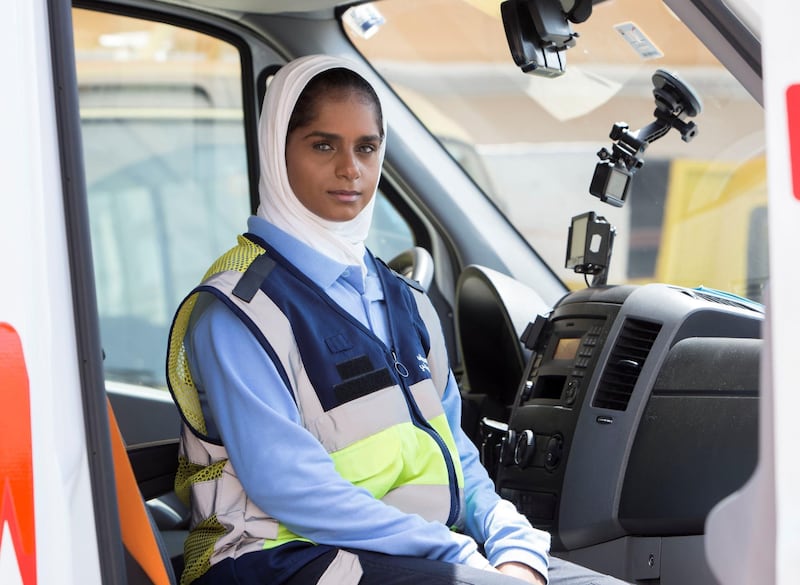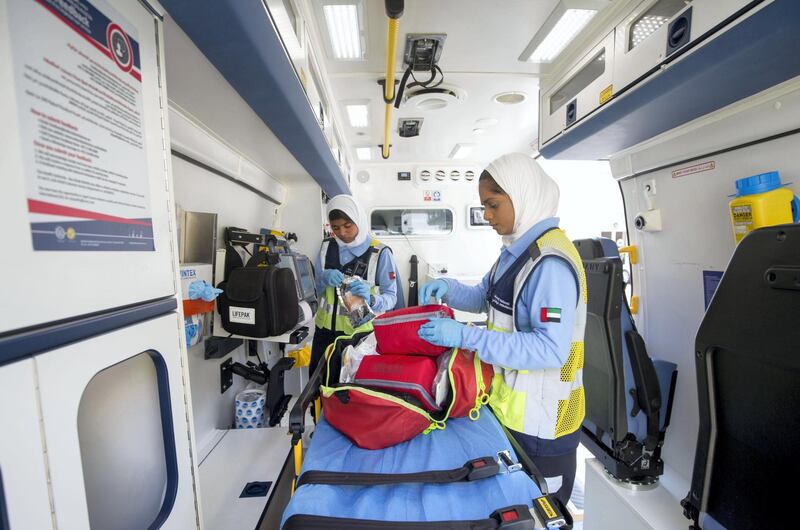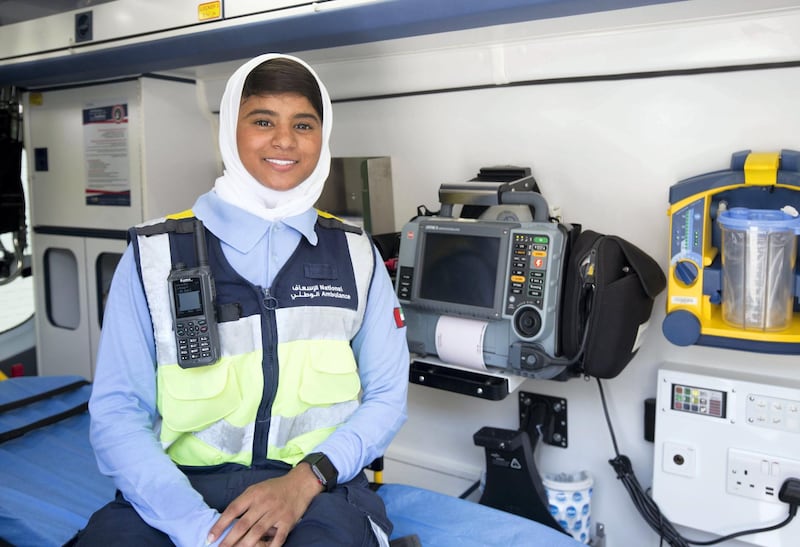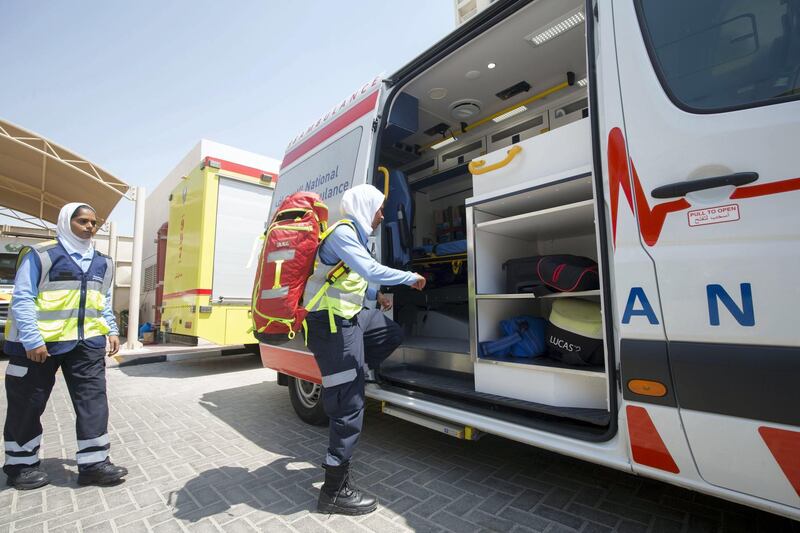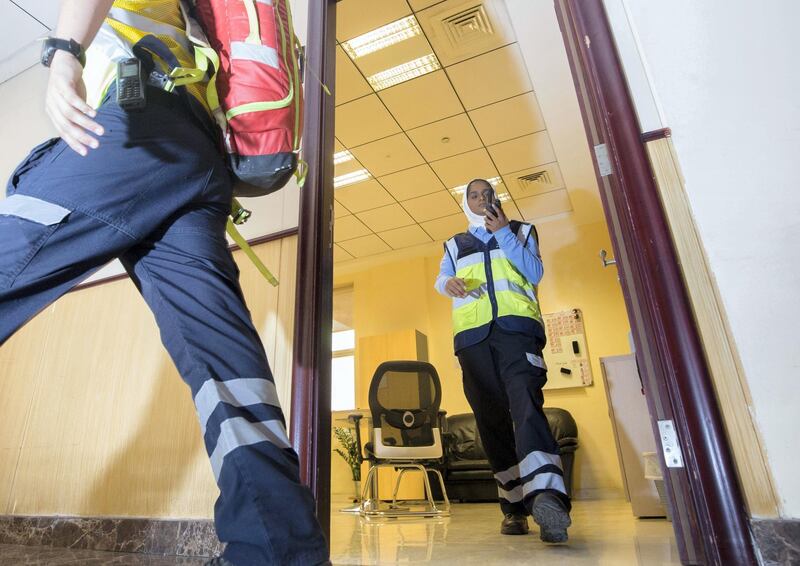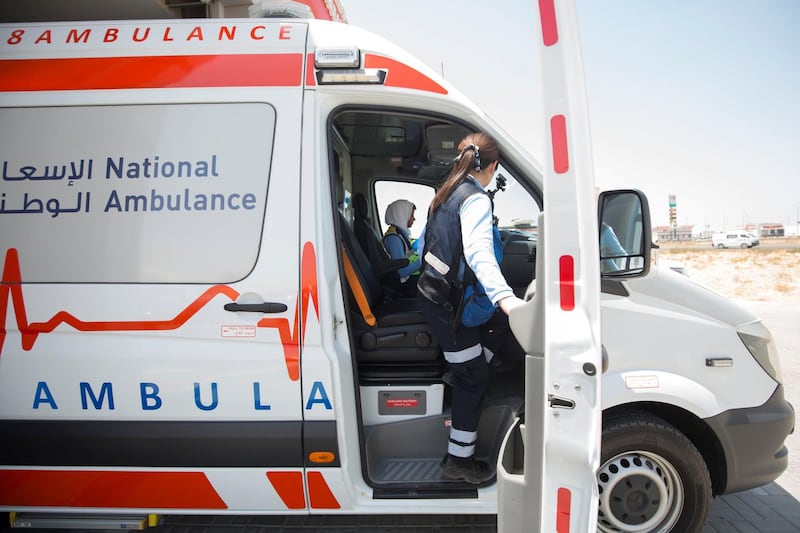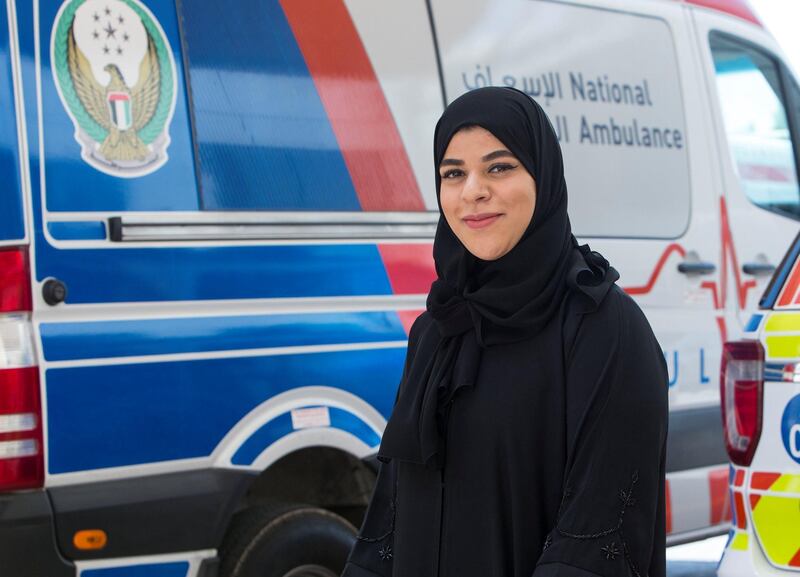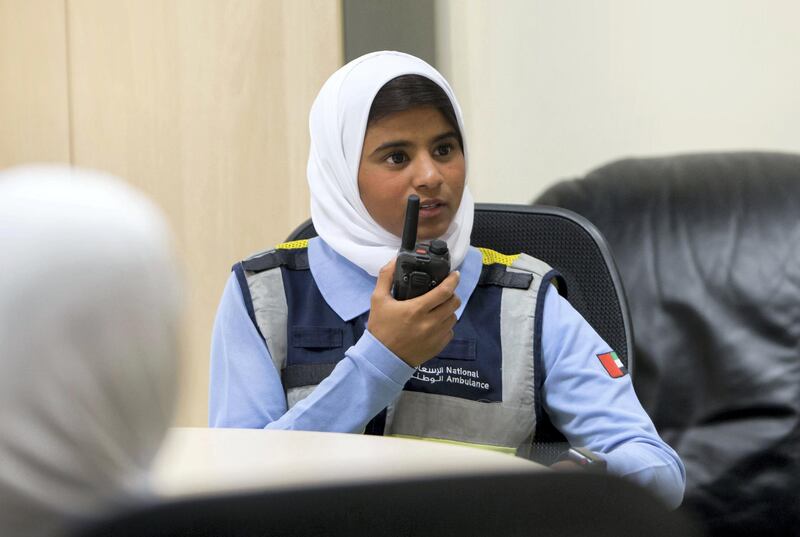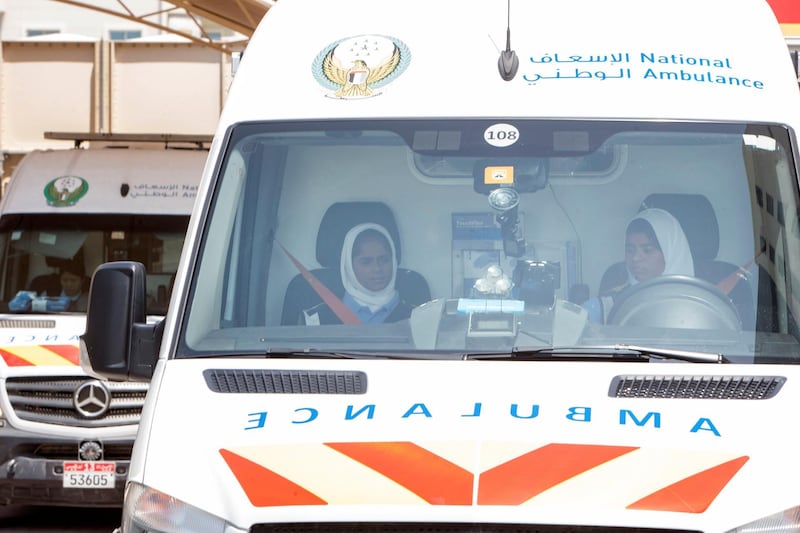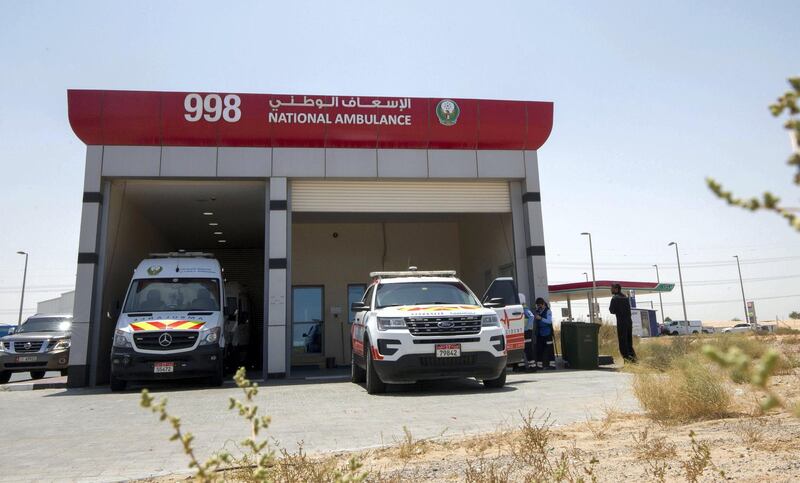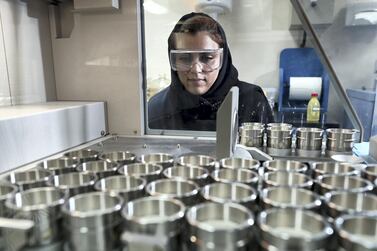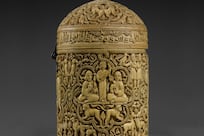“Charlie 108,” the radio echoed. “Please respond to an RTC (road traffic collision) on Sheikh Mohamed bin Zayed Road opposite Enoc towards Sharjah. You are responding with Charlie 991. More details will be provided shortly.”
Seconds later, more instructions were relayed but two female Emirati Emergency Medical Technicians had already jumped into an ambulance, parked at an Ajman station, and were headed for the crash site.
They were among 34 Emirati women who work as EMTs at the National Ambulance.
Though they make up less than 8 per cent of the 425-strong team - that serves all emirates but Abu Dhabi and Dubai - they are crucial members of the rapidly expanding workforce that was previously dominated by men.
“Throughout our public services, Emirati females are at the heart of taking the nation forward,” said Ahmed Al Hajeri, chief executive of the National Ambulance, ahead of Emirati Women’s Day.
“At National Ambulance, we have seen women rise to the challenge of delivering an emergency health service to the best international standards.”
For years, Emirati women were deterred from joining the ambulance because of cultural stigma surrounding the gruelling shifts and emotionally demanding work. Even those who wanted jobs could not have had them until Sheikh Saif bin Zayed, Deputy Prime Minister and Minister of Interior, announced the launch of the ambulance
network in the previously unserved Northern Emirates in 2014.
Today, 50 ambulance vehicles patrol the roads of the Northern Emirates, 24 hours a day, responding to almost 6,000 emergency calls every month.
Emirati women were encouraged to join two years ago when the National Ambulance Emirati EMT programme, open to both sexes, was launched.
In its first year, 13 Emiratis signed up for the one-year programme, which requires more than 100 hours of training. All but one of the applicants were women. The following year, only three of the 25 enrolments were from men.
From car accidents and miscarriages to heart attacks and falls from balconies, the women rise to every challenge with professionalism and care. They have to be a source of strength and calm to panicking and injured patients while working quickly to save lives.
“We have seen it all and the biggest challenge which we had to overcome was to deal with each of them calmly,” said one female EMT.
Jameela Al Zaabi, who became the first Emirati paramedic after becoming a nurse in 1985, said the interest from Emirati women was encouraging but it was crucial that more of them join ambulance services.
“This is a challenging field were more women are needed simply because of the cultural sensitivities and because Emirati women are more than capable of excelling in it.
“On Emirati Women’s Day, I am proud of what my fellow Emirati sisters have achieved. I hope to see a larger representation in national ambulances as well as every sector,” said Ms Al Zaabi, 54, who works for Dubai’s ambulance service.
Despite the long and often unstable hours, graduates of the programme say there is no other field they would rather be in. Some spent years convincing their families while others left behind corporate careers to dedicate their lives to helping others.
The crews covers five emirates out of 50 locations but also assist with major events in Abu Dhabi when needed. They take no public holidays.
“But it is the most rewarding profession ever, you are saving lives and representing your country,” said EMT Marwa Alamoodi, 23.
A single EMT responds to an average of three to five emergency calls every day. The majority are trauma and car accident reports.
“Emirati women are our inspiration and we encourage even more to join us in our vital mission,” Mr Al Hajeri said.
Graduates of the EMT programme can go on to become paramedics. Paramedic programmes require up to 1,800 hours of training.
